Here’s a one-day, $30 mod you can do to your car if it has interior rattles, road noise, or if the car is too loud and buzzy from outside once the subwoofers kick in. Mine exhibited all of these problems.
The easiest way to fix all of it is to pack the panels with something light, fluffy, malleable and non-flammable. There’s some rather expensive options that can be purchased from audio shops, but they tend to cost more, weigh more and don’t work as well. The one exception where I’d use it would be in the doors, where there’s moving windows and locks to factor in.
Today, I’m filling in the back part of the car – from the doors back.
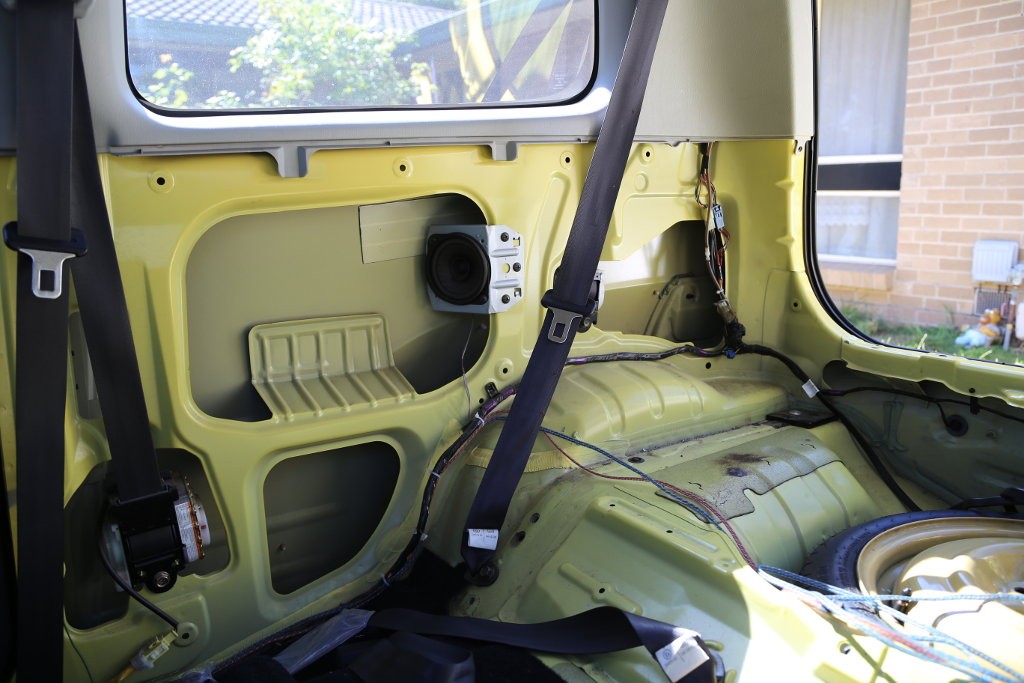
Here’s the filler of choice: EarthWool.
It’s light. It’s fluffy. It insulates sound. It insulates heat. It’s made from glass so it won’t catch fire. You may want to wear gloves when handling it, but it’s nowhere near as itchy as fibreglass pink-batts.
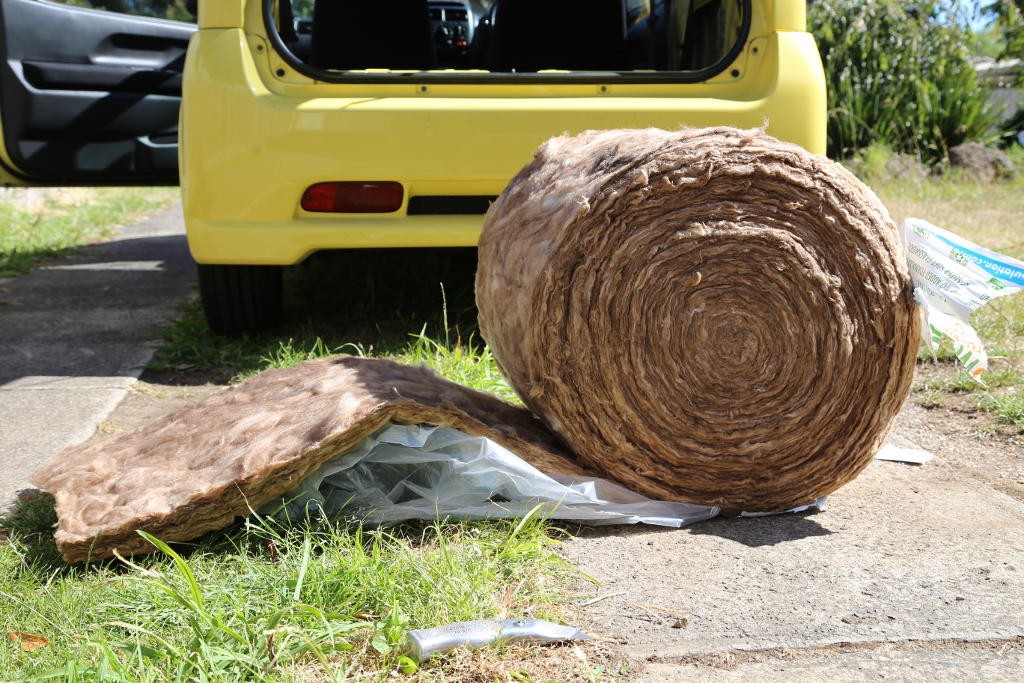
The first thing to do is remove the interior panels from the car. This will likely involve removing the back seat, and whatever mondo stereo you happen to have. It’s a good idea to lay out all of the things you remove onto a tarpaulin mat in the garage. It helps from things getting dirty, damaged or lost.
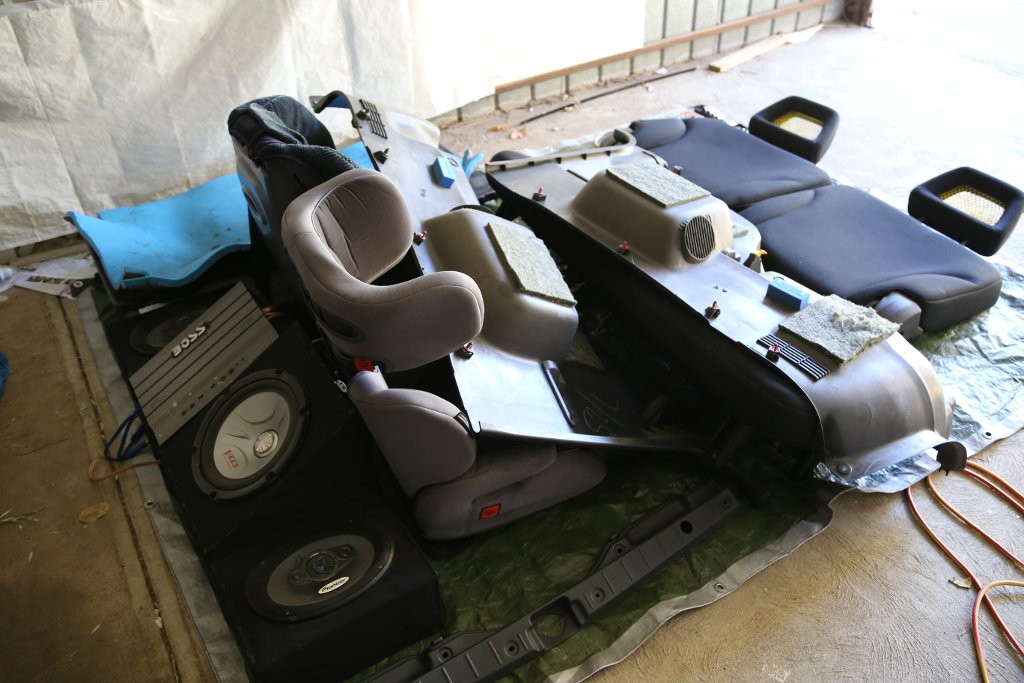
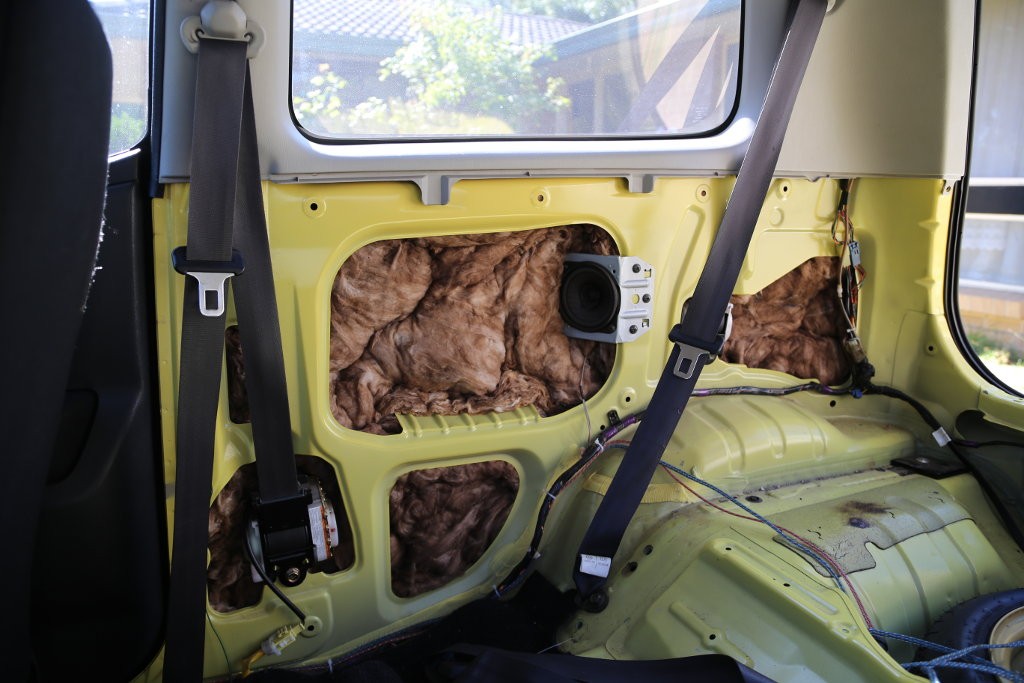
It’s fairly straight forward to fit. Try to cut large pieces, lay them flat and ensure that you fill every last nook and cranny. If you have a newer car, you’ll need to avoid things like air bags, seat-belt pre-tensioners and anything that needs to move or may generate heat. In an Ignis, there’s very little weighing it down.
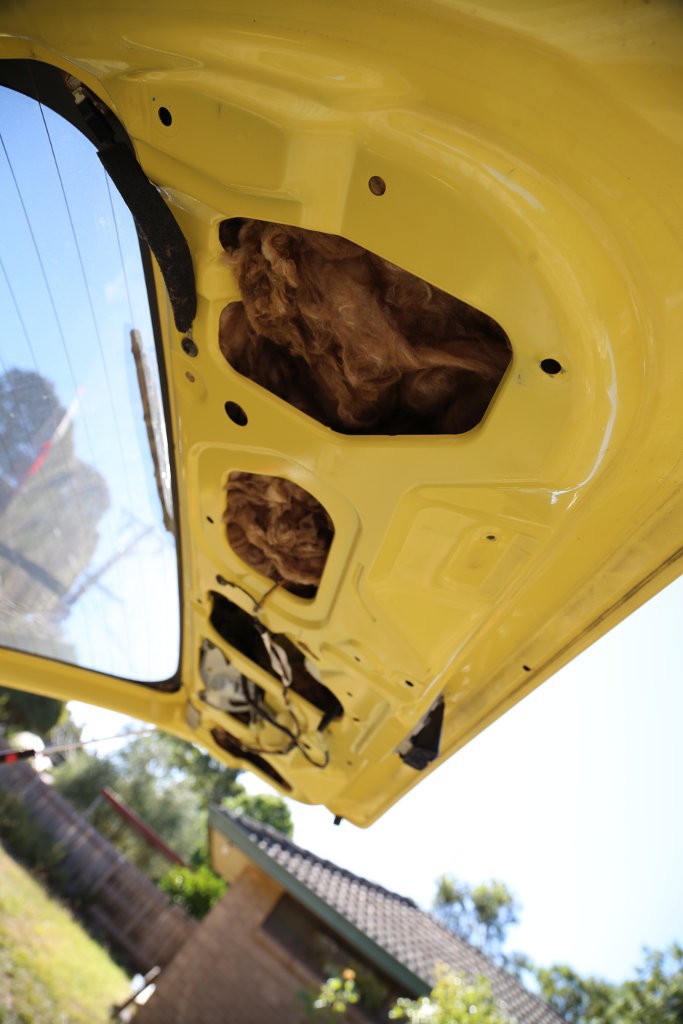
The boot door is actually quite important. Before doing this, the subwoofers would make the rear wipers jump off the glass and the registration plates would buzz at volume. Filling it with insulation deadens the vibrations significantly. It will also slightly lower the exhaust noise from coming back into the cabin. When doing this, make sure that you don’t interfere with the operation of the door locks or the wiper motor.
Once you’ve filled it, put everything back together and take it for a test drive. Personally, I noticed the following benefits:
- Reduced road noise.
- No more rattles from the interior panels.
- Better acoustics from the car stereo. It sounds less like a tin can and more like a cinema baffle wall.
- Improved thermal insulation (you’d expect that).
- Car stereo produces far less noise from outside an enclosed vehicle (doors shut, windows up).
- Better separation of noise from inside and outside the cabin.
Of course, it doesn’t add a noticeable amount of weight either.
Leave a Reply